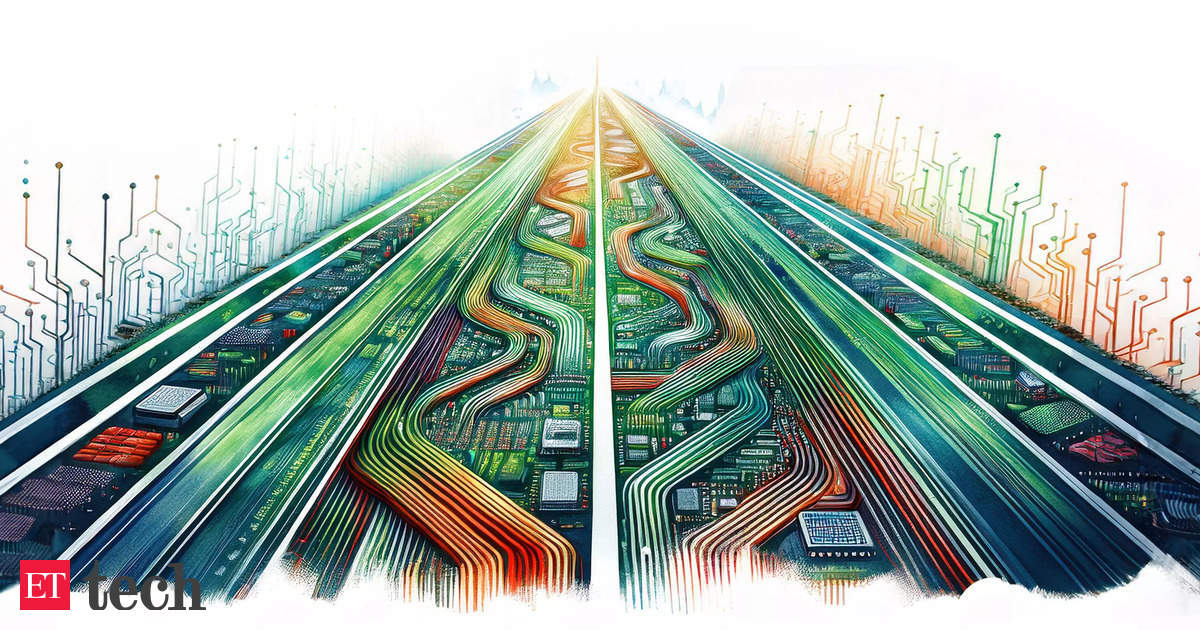electronic components and computer hardware accounted for more than half of electronics imports in the June 2024 quarter, up from 46% before the pandemic. India’s demand for electronic components is expected to reach $240 billion by 2030, but domestic demand manufacturing faces a 10-20% cost disadvantage compared to competitors such as China, Vietnam and Mexico. Furthermore, we lack large manufacturing corporations, a strong design ecosystem, and critical raw materials to support the electronics sector.
dazzling reminder
India’s merchandise trade deficit with China, which exceeds $85 billion, serves as a stark reminder of our dependence on Chinese imports for raw materials and components. This reliance is not only an economic challenge but also poses serious national security risks, including potential spyware vulnerabilities embedded in imported hardware. To truly free ourselves from this over-dependence, we must cultivate national capabilities in the electronics and semiconductor value chain.
The United States offers valuable lessons. His Vannevar Bush model fostered innovation in GPS and microchips through collaboration between the university and the private sector under DARPA. India must adopt a similar approach. While the government’s announcement of a Rs 1 lakh crore corpus to boost R&D in emerging sectors is a welcome move, much more needs to be done to make Indian products compete globally.
While India’s semiconductor policy is gaining momentum, the ecosystem remains incomplete. Semiconductor factories may begin to emerge in the coming years, but without designing and manufacturing our own products and chips, these factories will rely primarily on exports. India needs a virtuous cycle from system to chip to factory. A system-to-semiconductor approach is needed to ensure we cover every step of the value chain, from product design to chip manufacturing. Domestic factories should meet domestic demand, but for them to prosper, we must develop our own products, thus creating a virtuous and self-sustaining cycle.
Discover the stories of your interest
Patience is needed
Building product companies requires significant R&D investments and longer gestation periods compared to trading or systems integration companies. Companies that invest in cutting-edge R&D and product development typically enjoy higher margins, driving long-term growth. However, in 2021, India’s gross spending on R&D was only 0.8% of GDP, in stark contrast to South Korea, which invests 4.8% of its GDP on R&D. South Korea’s chaebols (business conglomerates) have prospered thanks to continued investments in R&D, positioning the country as a world leader in electronics and semiconductors.
Indian products also often face challenges in government tenders due to strict criteria, while Chinese companies, supported by their government, aggressively use predatory pricing to capture markets. Furthermore, research and development carries inherent risks, which can only be mitigated by ensuring large-scale manufacturing and demand. Competing globally is essential to being competitive.
China gives huge deals to its companies at scale. We need the government to give business to Indian companies and provide low-cost financing. Indian companies should be defined as those registered in India, headquartered in India, with intellectual property in India and majority owned by Indians. If the IP is not resident in India, the ownership and associated financial benefits will continue to vest in foreign entities.
The electronics value chain is complex, spanning original equipment manufacturers, design firms, semiconductor factories, and manufacturing companies. Electronics companies that own the product, brand and design are at the top and capture almost 60% of gross profits, depending on the product. India has a significant share of the global STEM talent pool, with 31% of STEM graduates worldwide coming from that country.
We have proven capabilities to leverage every part of the value chain. Ironically, despite India’s pioneering IT products (hydrochlorideWipro, etc.) in the past, we have moved towards cheap imports, trade and a service-dominated economy. If we continue on this path, our ambition to achieve Atmanirbharta in digital hardware will continue to be out of our reach. To become truly self-sufficient, we must design and manufacture in India and have a product mindset.
Disclaimer:
The information contained in this post is for general information purposes only. We make no representations or warranties of any kind, express or implied, about the completeness, accuracy, reliability, suitability or availability with respect to the website or the information, products, services, or related graphics contained on the post for any purpose.
We respect the intellectual property rights of content creators. If you are the owner of any material featured on our website and have concerns about its use, please contact us. We are committed to addressing any copyright issues promptly and will remove any material within 2 days of receiving a request from the rightful owner.


